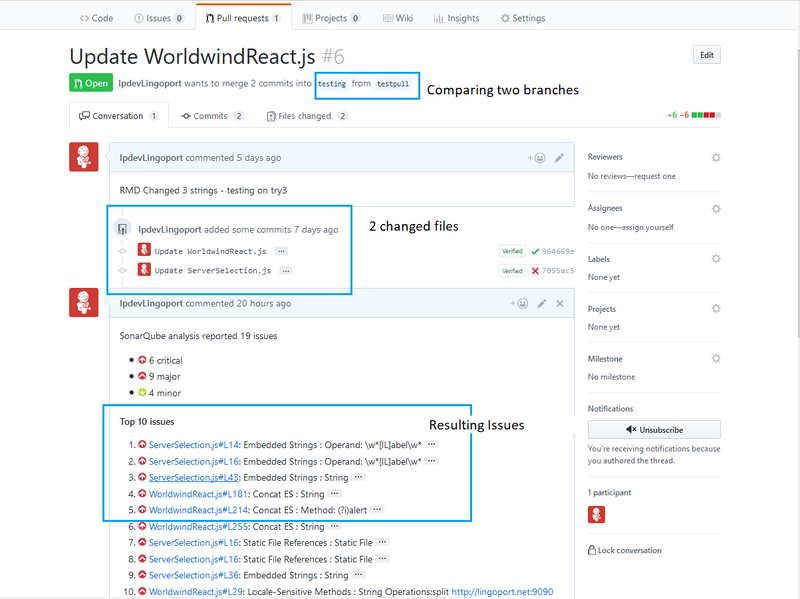Difference between revisions of "Pull Requests"
(→Set up Nodes on Jenkins) |
|||
| Line 16: | Line 16: | ||
If you are using the Distributed Pull Requests option, the first thing that needs to be done is to set up nodes in Jenkins. If you installed the [[Lingoport_Suite_Installation#NodeInstall|Node Installer]] and followed its setup instructions, there should be a master system (where Jenkins and Lingoport Dashboard are hosted) and at least one agent or node system. The master system should be able to ssh into the agents centos user and the jenkins user. If this is not completed, make sure that is done before proceeding further. |
If you are using the Distributed Pull Requests option, the first thing that needs to be done is to set up nodes in Jenkins. If you installed the [[Lingoport_Suite_Installation#NodeInstall|Node Installer]] and followed its setup instructions, there should be a master system (where Jenkins and Lingoport Dashboard are hosted) and at least one agent or node system. The master system should be able to ssh into the agents centos user and the jenkins user. If this is not completed, make sure that is done before proceeding further. |
||
| − | Create Nodes in Jenkins |
+ | ===Create Nodes in Jenkins=== |
| − | Manage Jenkins → Manage Nodes → |
+ | On the Master system, in Jenkins, Select <b>Manage Jenkins → Manage Nodes → New Node</b> |
= Git Pull Requests = |
= Git Pull Requests = |
||
Revision as of 18:55, 31 January 2018
The Lingoport Suite offers two options for Pull Requests from your repository. The Pull Request can be done on your Lingoport Server or there is a distributed option that uses the Master/Agent capability of Jenkins to distribute the work among several nodes.
To use the Distributed Pull Request option, please install the Node Installer optional software.
Contents
GitHub and Git Pull Requests
GitHub is a Web-based Git repository hosting service. It offers all of the distributed revision control and source code management (SCM) functionality of Git as well as adding its own features.
Files can be committed in a Git branch or directly in the Master branch. When committing files in a branch, pull requests let you know what changes you've made to a repository before they are committed to the repository's master branch. Once a pull request is sent, interested parties can review the set of changes, discuss potential modifications, and even push follow-up commits if necessary.
Configuring Pull Requests
Set up Nodes on Jenkins
If you are using the Distributed Pull Requests option, the first thing that needs to be done is to set up nodes in Jenkins. If you installed the Node Installer and followed its setup instructions, there should be a master system (where Jenkins and Lingoport Dashboard are hosted) and at least one agent or node system. The master system should be able to ssh into the agents centos user and the jenkins user. If this is not completed, make sure that is done before proceeding further.
Create Nodes in Jenkins
On the Master system, in Jenkins, Select Manage Jenkins → Manage Nodes → New Node
